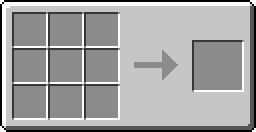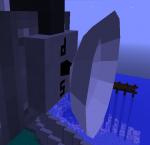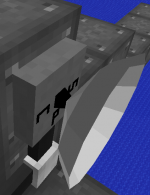Difference between revisions of "Transmitter Antenna"
From Electrical Age
Omega Haxors (talk | contribs) m |
(mark elements used on page in *bold*) |
||
| Line 7: | Line 7: | ||
}} | }} | ||
| − | Transmitter antennas allow you to beam power across the air, to be collected at a reverse-facing receiver antenna. They have a limited range, and become less efficient the further the distance. | + | '''Transmitter'''antennas allow you to beam power across the air, to be collected at a reverse-facing '''receiver''' antenna. They have a limited range, and become less efficient the further the distance. The maximum range in the default configuration is 200 blocks. |
Revision as of 21:29, 23 December 2016
Low/Medium/High Power Transmitter Antenna
| Block type: | Block |
| Powered by: | 50/200/800 Volts |
| Requirements for operation: | None |
| Stackable: | Yes (64) |
Transmitterantennas allow you to beam power across the air, to be collected at a reverse-facing receiver antenna. They have a limited range, and become less efficient the further the distance. The maximum range in the default configuration is 200 blocks.
Crafting
Ranges
| Type | Voltage | Max Range |
|---|---|---|
| Low Power | 50V | 200m |
| Medium Power | 200V | 250m |
| High Power | 800V | 300m |
- Power drops over distance.
input/output
You can send a signal from the receiver to the transmitter. Typically you'd use this to control the throttle on the transmitter end. This can be especially useful if the receiving end no longer requires power or otherwise gets disconnected from the network as an overloaded receiver will fail.
Receiver Antenna
- Signal: You can set a signal here and it will be sent to the transmitter. Convenient!
- Power: Power comes from here. The component will fail too much accumulates.
Transmitter Antenna
- Signal: A recieved signal from the reciever. Can be used to communicate a shut-down.
- Control: Throttle to determine how much power to transmit. Shuts off at 0v.
- Power: Power goes into this, and is fired into the air, hopefully to be caught by a receiver!



